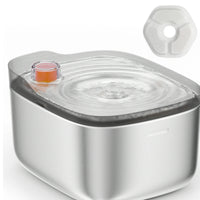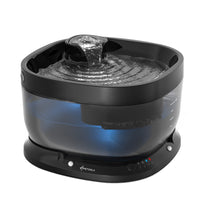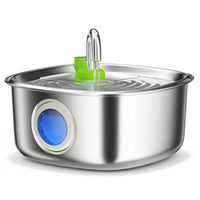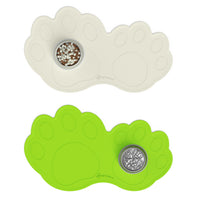How Do Dogs See? The Serious Misconception That They Don't Perceive Colors

Although our most loyal companions do not see in grayscale, their color, light, and contrast perception is somewhat different from that of humans.
The main character’s question in the movie "Cats & Dogs" about choosing between the red and blue wires to deactivate the bomb — "Is it the light or the dark gray one?!" — is a good joke, but unfortunately, it has little to do with reality. Dogs do see colors, though in a narrower range compared to humans.
How Do Dogs See Compared to Humans?
The world around dogs appears less contrasting and with slightly lower resolution than it does to us. An exception to this is "night mode," because dogs' lenses and corneas occupy a larger surface area in the eyeball than humans', and they have more rod cells, which are responsible for seeing in the dark. Their vision is also complemented by a special reflective layer called the tapetum lucidum, which is why their eyes appear greenish when they look into bright light in the dark.

Most often, the reflective function of the tapetum lucidum is noticeable in the dark.
If they are locked in a pitch-dark room, they naturally see nothing, just like humans, because dogs' eyes also need a certain amount of light to recognize their environment. The difference lies in how their eyes process what they see: they can more effectively perceive depth, the sharpness of moving or still forms, and colors in low-light conditions.
Compared to our three types of cone cells — which perceive violet, green, and yellow wavelengths — dogs have only two, so they see similarly to people with red-green color blindness. Researchers believe this developed because dogs' eyes adapted to dawn and dusk activity during evolution, times of day when color perception is less important than motion detection or spatial vision.


What Does Your Dog See When They Look at You?
Probably the meaning of life, but instead of romantic theories, let's jump to more scientific explanations!
A 2016 psychological study revealed that dogs can distinguish human faces and pay special attention to the eyes, their movement, and where they are looking. Although they are good at using the facial recognition method based on the positioning of eyes, nose, and mouth, when presented with separate photos of these body parts during tests to differentiate between two images, the eyes always won among the dogs.
What many are most curious about, however, is whether a dog can tell from a facial expression if they are being scolded or if their behavior is being praised. The answer is a resounding yes.

Numerous studies have attempted to map dogs' ability to recognize our expressions, and the results have been consistently encouraging. Based on these, it can be stated that dogs recognize the facial expressions of people around them at the level of one- to two-year-old children, and like babies, they use our actions to associate their meaning.
During socialization, they learn that a smile and a friendly tone promise pleasant experiences, while a frown and "baring of teeth," or occasionally a mouth opening to shout, indicate the opposite. Dogs can also mimic human facial expressions, and thanks to millennia of friendship, they have realized how to influence their owners with expressions similar to humans'.
These clever little furballs realized during the millennia-long domestication process that humans find large, pleading eyes irresistible, so they are not shy about using them against us when they desire a pet or a treat.






 more
more















0 comments